“If pipes are involved, it’s my specialty,” says Matt Benevides, owner of Benevides Plumbing & Mechanical Inc., New Bedford, Mass. A self-proclaimed workhorse, Matt’s journey didn’t quite start off working with pipes. Benevides went to a vocational school for welding and sheet metal, got a job hanging duct work in schools for about three years Read more
Plumbing

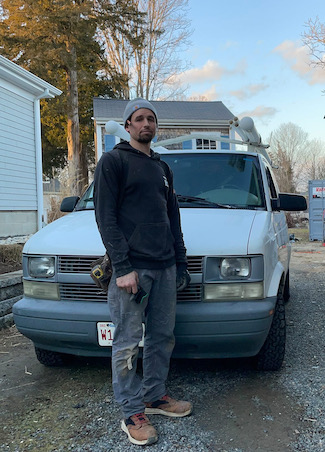 “If pipes are involved, it’s my specialty,” says Matt Benevides, owner of Benevides Plumbing & Mechanical Inc., New Bedford, Mass. A self-proclaimed workhorse, Matt’s journey didn’t quite start off working with pipes. Benevides went to a vocational school for welding and sheet metal, got a job hanging duct work in schools for about three years until he eventually got laid off. “My grandmother kept telling me to be a plumber like her father; that way I’d never get laid off. I took her word and jumped,” says Benevides.
“If pipes are involved, it’s my specialty,” says Matt Benevides, owner of Benevides Plumbing & Mechanical Inc., New Bedford, Mass. A self-proclaimed workhorse, Matt’s journey didn’t quite start off working with pipes. Benevides went to a vocational school for welding and sheet metal, got a job hanging duct work in schools for about three years until he eventually got laid off. “My grandmother kept telling me to be a plumber like her father; that way I’d never get laid off. I took her word and jumped,” says Benevides.
Benevides started his apprenticeship for a large outfit just outside of Boston in 2006. “They hired me with no experience, no apprenticeship card—probably hired me because I broke out my funeral suit for the interview,” says Benevides.
When Benevides thinks back, he realizes that the opportunity doesn’t happen very often where a company takes a chance on someone and provides them with in-house schooling for three years—as long as you passed. “Once I received the ticket, my next goal was to work my way to foreman,” says Benevides.
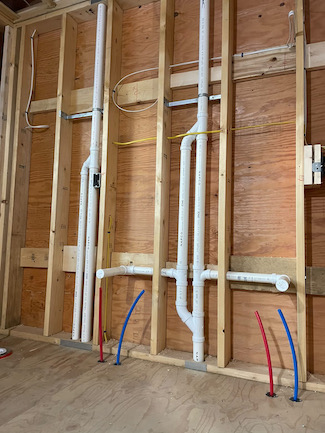 Benevides worked his way to become the lead guy on projects until the company had the confidence in him to run small projects. They then gave him a van and he ran small commercial projects and commercial service. “Once I grew out of that spot, I knew I wanted to run larger projects so I switched companies to run larger projects like schools and a marine biology center, for example.”
Benevides worked his way to become the lead guy on projects until the company had the confidence in him to run small projects. They then gave him a van and he ran small commercial projects and commercial service. “Once I grew out of that spot, I knew I wanted to run larger projects so I switched companies to run larger projects like schools and a marine biology center, for example.”
Once Benevides figured out he could do the work, he was looking for something else and started doing residential side work at night and weekends. “After a year, I was able to take off on my own, and now I’m on year two.”
 Leading the Way
Leading the Way
Benevides owes a lot of his work ethic and drive from watching his dad his entire life. “My dad owned and operated his own landscaping business, and seeing that made me want more.” As far as the trades are concerned, Benevides had a foreman named Steve Lima who started with him as a 2nd year apprentice and followed him around. “He showed me the ins and outs of plumbing and running commercial jobs. I called him my ‘plumbing father,’” says Benevides.
Benevides says that he wants to pay it forward through his Instagram page (@boston_plumbing_monstahs_). “I would hope that I’m making the trade more enjoyable so visitors to my page can see the ins and outs of plumbing rather than a plumber equals a plunger,” says Benevides. “Social media is the way to kids these days so I’d say we are on the right road.”
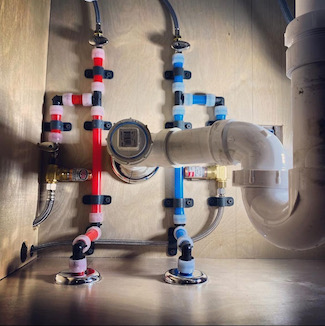 Moreover, the Instagram page has recently led to some local jobs and the opportunities are endless, says Benevides. “You never know who will see something you post.”
Moreover, the Instagram page has recently led to some local jobs and the opportunities are endless, says Benevides. “You never know who will see something you post.”
Balancing work with leisure time is not always that easy. Beneivdes’ spare time is dedicated to his family, if I’m not working, I’m trying to be there for my wife and four kids. “I do my best to be there when my family needs me, and I take at least one day off a week. When the weather gets warm again, I make sure to bring the kids outside as much as possible. Other than that, I plumb.”
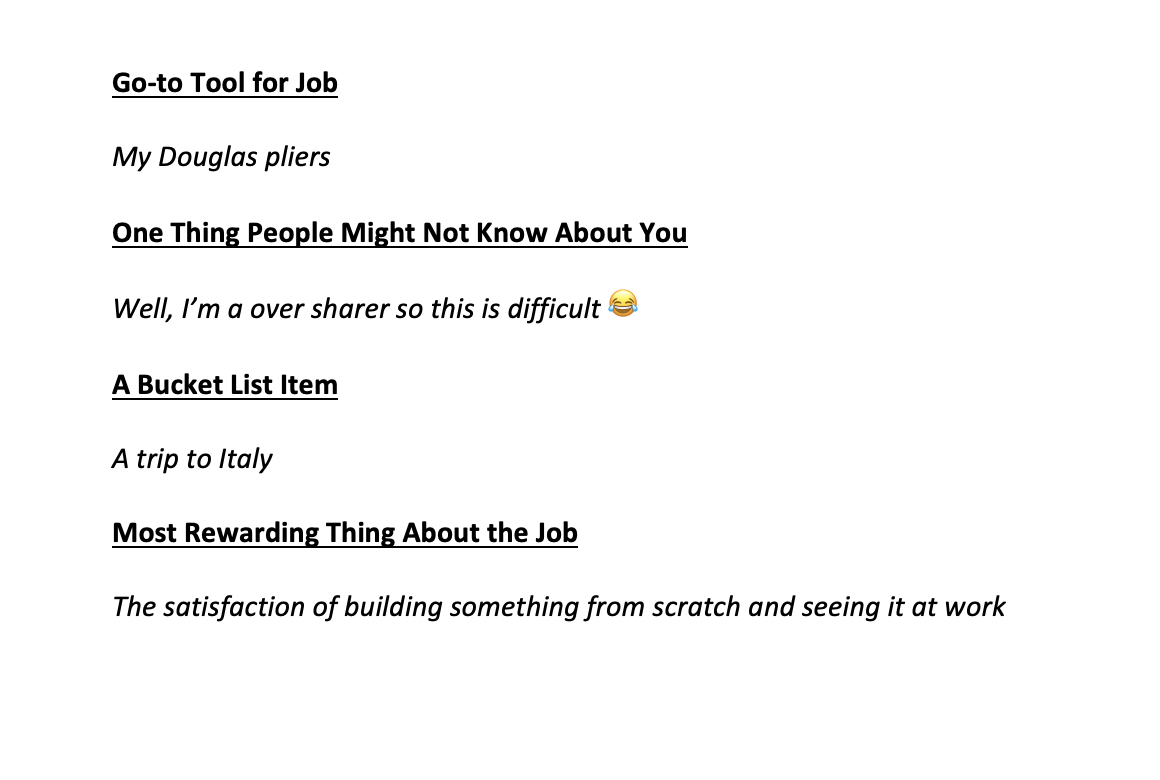
Salt Lake City — The International Association of Plumbing and Mechanical Officials (IAPMO®), along with its partners at the American Supply Association, NSF international, and the Water Quality Association, applauds the state of Utah for passing House Bill 21 into law, which advances the state’s efforts to address water quality testing for schools and child Read more
Salt Lake City — The International Association of Plumbing and Mechanical Officials (IAPMO®), along with its partners at the American Supply Association, NSF international, and the Water Quality Association, applauds the state of Utah for passing House Bill 21 into law, which advances the state’s efforts to address water quality testing for schools and child care centers. Gov. Spencer Cox signed HB 21 into law on Thursday.
“I am pleased to sign HB 21 into law and help protect the health and safety of school children in Utah,” Cox said. “Utah is taking the appropriate steps to get the lead out of drinking water and ensure that our children are drinking safe and clean water.”
Sponsored by Rep. Steve Handy (R-16) and Sen. Jani Iwamoto (D-4), HB 21 outlines timelines for schools and child care centers to test the quality of water in their buildings and report that testing data. Facilities will then need to take action if the presence of lead is above 5 parts per billion, keeping in line with the industry’s current drinking water quality standards and product capabilities.
Lead can enter drinking water when plumbing materials that contain lead corrode. Even low levels of lead exposure can cause permanent cognitive deficits and behavioral difficulties in children.As the federal government allocates money to states for them to address water quality and replace lead services lines, it is critical to remove and replace plumbing fixtures, faucets, and pipes within the building that may be leaching lead.
“When I got involved in running this bill four years ago, I was always focused on the health of schoolchildren,” Handy said. “All outside stakeholders felt that it was a good idea, as did most legislators, but we could never identify a funding source. It took American Rescue Plan Act funds to finally get it over the finish line. We brought all parties together, including private child care providers. It’s going to be a great initiative that will protect the lives of thousands of Utah children.”
The bill also directs the state’s Drinking Water Board, in coordination with the Department of Health’s Division of Drinking Water, to develop regulations that determine which actions are effective to reduce lead levels and the timeframe in which those actions must be taken.
“We’re grateful for Rep. Handy’s leadership in addressing this urgent public health issue by providing the tools that will help us better protect Utah’s most vulnerable from lead poisoning,” said Tim Davis, director of the Division of Drinking Water in Utah. “We are committed to supporting schools and child care centers through this process and look forward to the day when we have tested every tap.”
“IAPMO looks forward to working with state officials to ensure that appropriate and effective products are used for remediation within these school and day care facilities,” said Robyn Fischer, director of Government Relations for The IAPMO Group. “Products that have been certified to meet industry standards for safety and efficacy are crucial to help reduce the presence of lead in drinking water and protect children’s health and well-being. Replacing aging infrastructure within buildings will amplify the efforts to replace lead service lines and build community resilience. This law advances Utah on the path to cleaner and safer drinking water for its residents.”
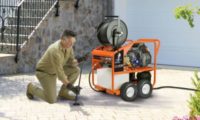
Misconception #1 – You should always wear rubber gloves when operating a snake style drain cleaning machine to protect yourself from the health risks of sewage. While it is true that plumbers and drain cleaners should always be aware that they and their equipment are potentially in contact with human waste and take appropriate actions Read more
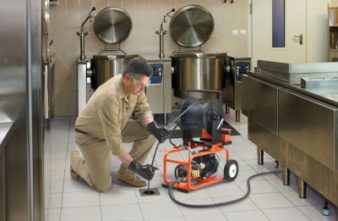 Misconception #1 – You should always wear rubber gloves when operating a snake style drain cleaning machine to protect yourself from the health risks of sewage. While it is true that plumbers and drain cleaners should always be aware that they and their equipment are potentially in contact with human waste and take appropriate actions, operating a cable style drain cleaning machine wearing only rubber gloves is not one of them. The problem with rubber gloves is that they can become pinched and caught in the rotating coils of a drain cleaning cable, causing great harm to the operator. We always recommend that operators wear heavy-duty two-ply leather gloves or something similar whenever their hands are anywhere near a drain cleaning machine. Thick leather gloves will not get caught between the coils of a snake or cable and can protect your hands from unexpected kinks or loops that sometimes form in the blink of an eye. If you want to wear rubber gloves to take appropriate sanitary precautions against sewage, then wear them under the leather gloves. This strategy gives you two levels of protection!
Misconception #1 – You should always wear rubber gloves when operating a snake style drain cleaning machine to protect yourself from the health risks of sewage. While it is true that plumbers and drain cleaners should always be aware that they and their equipment are potentially in contact with human waste and take appropriate actions, operating a cable style drain cleaning machine wearing only rubber gloves is not one of them. The problem with rubber gloves is that they can become pinched and caught in the rotating coils of a drain cleaning cable, causing great harm to the operator. We always recommend that operators wear heavy-duty two-ply leather gloves or something similar whenever their hands are anywhere near a drain cleaning machine. Thick leather gloves will not get caught between the coils of a snake or cable and can protect your hands from unexpected kinks or loops that sometimes form in the blink of an eye. If you want to wear rubber gloves to take appropriate sanitary precautions against sewage, then wear them under the leather gloves. This strategy gives you two levels of protection!
Misconception #2 — You should put a drain cleaning machine in reverse when retracting cable using a power feed device. Most modern drum style cable drain cleaning machines have a power feed and guide tube. This equipment makes it much easier to feed and retract the cable and serves to protect the operator. Every floor model brand of drain cleaning machine has a power cable feed that allows the operator to easily switch from forward to neutral to reverse while the drum and cable continues to spin in the forward direction. This feature is essential for smooth and effective operation of the machine. If the operator puts the electric motor in reverse and spins the drum and cable in the opposite direction, bad things tend to happen! Most drain cleaning companies coil their drum style cable in a ‘left hand wound’ direction. These cables are simply long, thin springs. Sometimes, like General’s Flexicore Cables, they have a solid inner core, and sometimes they don’t. However, all of them have a ‘direction’ to the outer coil that affects their performance and capabilities when under torque or in motion, and the drums, distributor tubes and power feeds that house and feed these cables are engineered with these capabilities in mind. When you reverse the motor while retracting the cable, you drastically increase the likelihood of kinking, tangling, or weakening the cable. The only time an operator should put the motor and drum of a machine in reverse is when they get a cutter wrapped up in an obstruction, and even then the duration should only be for a few seconds. Save yourself future complications and keep the machine in forward when the power feed is in reverse!
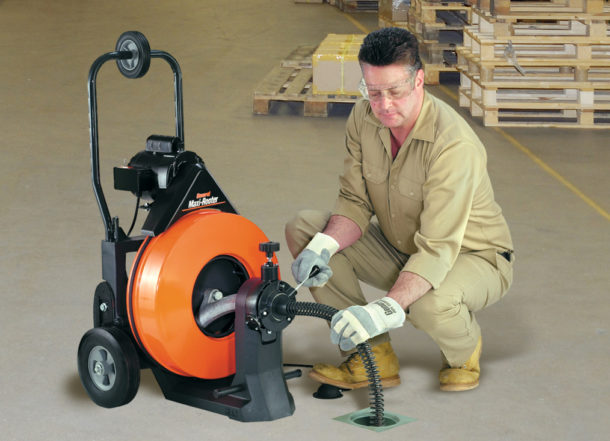
Misconception #3 – Hot water is better than cold water in cleaning drains with a high-pressure water jetter. While it is true that hot water can dissolve grease faster than cold water, the effect at high pressure is marginal. Generally speaking, in real world situations, it is not worth the additional cost and effort. Adding hot water pumps and heating tanks to your jetter protocol makes for a more expensive unit as well as doubling your work at the jobsite. High pressure cold water can do the job almost as fast, without the additional expense and time expenditure. For that reason, in a world where time is money, cold water is the way to go!
Misconception #4– High pressure water drain cleaning jetters with 4000 psi perform better than jetters with 3000 psi. In the past several years, we have seen more and more drain cleaning jetters with 4000 psi come on to the market, claiming that they have more power and effectiveness. However, according to our research, these claims are unfounded. When cleaning a drain, both pressure and flow rate are important factors. The psi, or pounds per square inch is necessary to dislodge foreign material in the pipe like grease and sludge. The jetting process is analogous to spray washing, and a certain amount of pressure, or psi is necessary to scour the inside of the pipe. However, after about 2,500 psi, further increases in pressure fail to deliver significant improvements in cleaning action. From that point on, the gallons per minute flow rate, or gpm grows in importance. For example, increasing a jetter’s flow rate from 4 gpm to 5.5 gpm almost doubles the machine’s drain cleaning speed, regardless of whether the psi is 3000 or 4000. So, look closely at the flow rate of high pressure water jetters before you buy, and don’t be fooled by marketing programs masquerading as science!
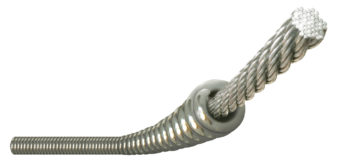 Misconception #5 — One of the biggest misconceptions that we hear from first-time General Pipe Cleaners customers is misjudging the ‘initial feel’ of our Flexicore Cable. If the customer is used to another brand of drain cleaner and then purchases a General machine or cable for the first time, they often complain to us that they received a defective cable. To them, compared to the cables that they are used to, it feels limp, weak and not stiff enough to fight its way through tough obstructions down the drain. Although their fears are unfounded, Flexicore does have a looser feel from other cables on the market because of the way it is engineered. However, we reassure our new customers is that the Flexicore will stiffen and strengthen when under torque, giving them clog busting power exactly when they need it the most. According to one customer, “it goes from a noodle to a steel rod in the blink of an eye when you hit the obstruction!” When it comes to General’s patented Flexicore Cable, first impressions can be misleading!
Misconception #5 — One of the biggest misconceptions that we hear from first-time General Pipe Cleaners customers is misjudging the ‘initial feel’ of our Flexicore Cable. If the customer is used to another brand of drain cleaner and then purchases a General machine or cable for the first time, they often complain to us that they received a defective cable. To them, compared to the cables that they are used to, it feels limp, weak and not stiff enough to fight its way through tough obstructions down the drain. Although their fears are unfounded, Flexicore does have a looser feel from other cables on the market because of the way it is engineered. However, we reassure our new customers is that the Flexicore will stiffen and strengthen when under torque, giving them clog busting power exactly when they need it the most. According to one customer, “it goes from a noodle to a steel rod in the blink of an eye when you hit the obstruction!” When it comes to General’s patented Flexicore Cable, first impressions can be misleading!
 David Dunbar is the National Sales Manager for General Pipe Cleaners, a leader in the drain cleaning/pipe inspection industry. He has been with General since 1996, starting as Customer Service Manager, then Assistant Sales Manager, and National Sales Manager since 2017. He earned a BS degree in Psychology from the University of Pittsburgh and has graduate credits in Human Resource Development and Organizational Theory. David enjoys using his extensive public speaking, video, and writing experience within the industry. He can be contacted at daved@generalpipecleaners.com
David Dunbar is the National Sales Manager for General Pipe Cleaners, a leader in the drain cleaning/pipe inspection industry. He has been with General since 1996, starting as Customer Service Manager, then Assistant Sales Manager, and National Sales Manager since 2017. He earned a BS degree in Psychology from the University of Pittsburgh and has graduate credits in Human Resource Development and Organizational Theory. David enjoys using his extensive public speaking, video, and writing experience within the industry. He can be contacted at daved@generalpipecleaners.com
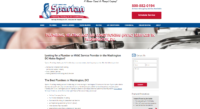
There are a lot of plumbing businesses out there, and many of them are still doing business the old-fashioned way. However, if you’re looking to take your plumbing business online, you’re going to need to do some things differently. This blog post will discuss how to take your plumbing business online and give you a Read more
There are a lot of plumbing businesses out there, and many of them are still doing business the old-fashioned way. However, if you’re looking to take your plumbing business online, you’re going to need to do some things differently. This blog post will discuss how to take your plumbing business online and give you a few tips on making it successful.
Create a website
The first thing you need to do is create a website. This is where potential customers will go to learn more about your business and what services you offer. Make sure your website is professional and easy to navigate. Include clear contact information and a call to action. If you feel like you don’t have the expertise to create a website yourself, consider utilizing the services of a professional developer that can not only design an attractive website, but also integrate useful tools such as a payment gateway API to ensure ease of use for your customers.
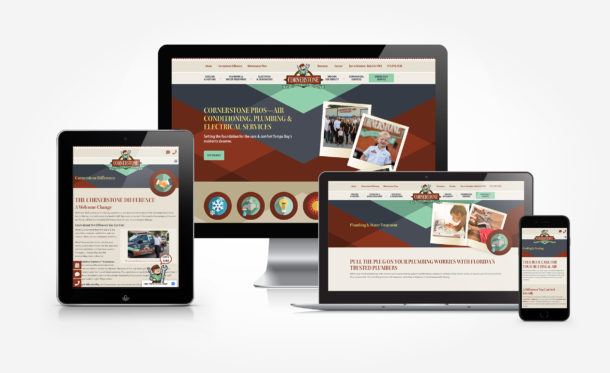
Use social media
Social media is a great way to connect with potential and current customers. Create accounts on popular platforms like Facebook, Twitter, and Instagram. Use these platforms to share information about your business, special offers, and helpful tips. Make sure you’re active on social media and responsive to comments and questions. Social media is a great way to build relationships with your customers. Also, don’t forget to include links to your website and social media accounts on your website. This will make it easy for visitors to find you online.
Get listed in online directories
There are a number of online directories where you can list your business. This makes it easier for potential customers to find you when they’re searching for plumbing services in their area. Some popular online directories include Yelp, Angie’s List, and HomeAdvisor. Make sure you take the time to create a complete and accurate listing. Include as much information as possible, such as your business hours, services offered, and contact information.
Use search engine optimization
Search engine optimization (SEO) is the process of optimizing your website to rank higher in search engine results. This is important because it makes it more likely that potential customers will find your website when they’re searching for plumbing services online. There are a number of things you can do to optimize your website for SEO. This includes using relevant keywords, creating quality content, and building backlinks. SEO is an integral part of taking your plumbing business online. By optimizing your website, you can make it more likely that potential customers will find you and learn about your business.
In conclusion, these are just a few tips on how to take your plumbing business online. By following these tips, you’ll be well on your way to success and reaching a wider audience of potential customers.
Indianapolis—Water & Wastewater Equipment, Treatment and Transport WWETT, the world’s largest annual trade show for wastewater and environmental service professionals concluded its annual event February 21-24, at the Indiana Convention Center in Indianapolis. With 10,500 registered professionals, the annual event connected notable and emergent brands with thousands of buyers, while providing ample networking opportunities and Read more
Indianapolis—Water & Wastewater Equipment, Treatment and Transport WWETT, the world’s largest annual trade show for wastewater and environmental service professionals concluded its annual event February 21-24, at the Indiana Convention Center in Indianapolis. With 10,500 registered professionals, the annual event connected notable and emergent brands with thousands of buyers, while providing ample networking opportunities and a full range of education led by renowned industry experts.
The 2022 edition of WWETT took over 270,000 NSF of the Convention Center, hosting 450 industry-leading suppliers in the expo hall; thus, offering attendees access to a wide variety of products and activations from the world’s largest suppliers and manufacturers to specialized SMBs with specific services. Manufacturers and suppliers showcased the latest products, services, and technology for the water and wastewater industries, including notable companies such as Federal Signal, HammerHead Trenchless, Infiltrator Water Technologies, Satellite Industries, Ridge Tool, Draincables Direct, and more.
In addition to an expansive expo floor, registered participants had the opportunity to engage with world-class education made available at the event. The event’s educational programs served as inclusive and productive sessions that allowed for connections in specific groups. WWETT 2022 registered over 10,000 seats in education classes.
“The opportunities for learning, engagement, and growth for both attendees and exhibitors were exemplary at this year’s WWETT event,” said Lauren Lamb, VP, Strategy, Marketing, and Conference, WWETT at Informa Markets. “The live format allowed for regional and non-local companies to communicate their products and expectations effectively, while expanding their connections in the proper areas that will largely benefit their company and consumers, as well as the industry as a whole. The focus of quality product and innovation was at a peak this year, with many exhibitors launching products and solutions to solve the industry’s current challenges.”
Mixers for Women in the Industry and New to the Industry both served as successful networking events. The mixers hosted a larger audience than in years past, with important connections established. Women in the Industry’s purpose is to connect women throughout the convenience services industry, encouraging professionals to meet, share ideas and develop important business relationships.
WWETT hosted a well-attended welcome party with over 1,400 industry members in attendance, which featured live music and entertainment as well as casino games. The welcome party served as another opportunity for industry connections and engagement.

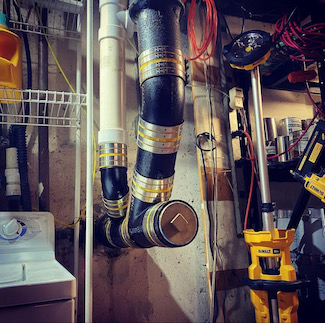 Leading the Way
Leading the Way